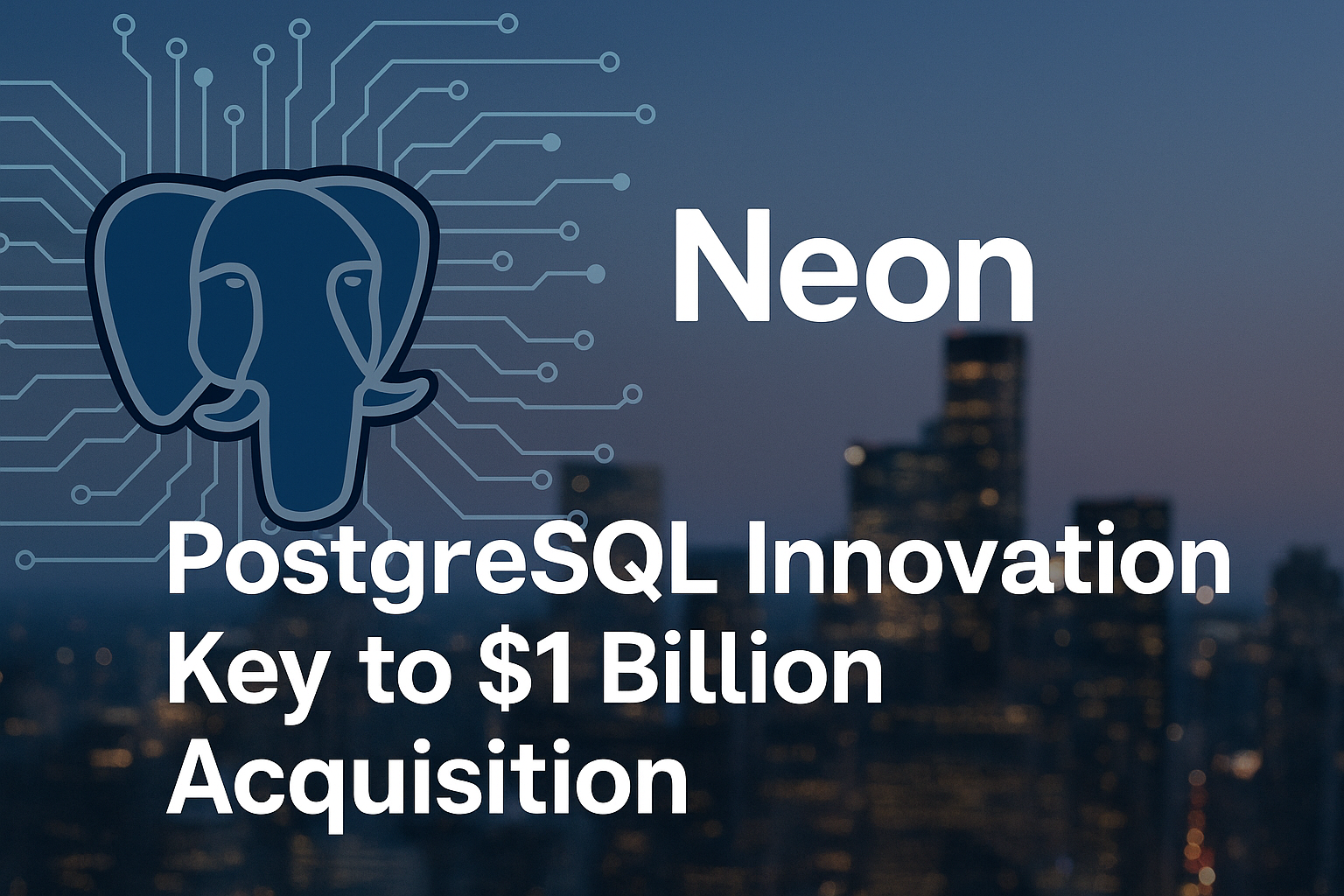

Table of Contents
When I first heard about Databricks acquiring Neon, I had to pause and absorb what this really meant. A billion-dollar acquisition — for a company reimagining PostgreSQL? That alone tells you something tectonic is happening in the database landscape. But more than the dollar amount, it’s what Neon has achieved that commands attention: separation of storage and compute for PostgreSQL — a concept that has been technically elusive and commercially under-appreciated until now.
PostgreSQL: A Brilliant Engine Built for Another Era
Let’s be honest: PostgreSQL is an incredible database engine, a marvel of engineering built on decades of solid systems thinking. But it was architected in an era where storage was local, compute was monolithic, and elasticity was not a requirement. The database community has long celebrated Postgres for its extensibility, its strong consistency guarantees, and its robust SQL compliance. But if we’re being intellectually honest, Postgres wasn’t built for the cloud-native, serverless, stateless future.
Neon dared to change that.
Separating Storage and Compute: A Technologist’s Everest
The idea of separating storage and compute in a stateful system like Postgres is not just challenging — it’s heretical to the original design assumptions. Traditional Postgres tightly couples the two, relying heavily on local disk, write-ahead logs (WAL), and shared memory buffers. Making it stateless means you must re-architect how snapshots are stored, how WAL is streamed and persisted, and how consistency is guaranteed in an environment where nodes come and go like whispers in the wind.
It’s one thing to put a Postgres-compatible wrapper over cloud blobs and call it “cloud-native.” It’s another to actually pull off architectural decoupling and maintain fidelity with Postgres semantics. That’s what makes Neon’s achievement so significant — they didn’t fork Postgres beyond recognition; they re-architected its foundation while staying loyal to its essence.
Others Tried, But Neon Finished the Climb
It’s important to acknowledge that Neon is not the first to attempt separation of storage and compute in PostgreSQL. Amazon Aurora made early strides in this direction with its custom PostgreSQL-compatible engine and serverless capabilities. YugabyteDB took a different route, building a distributed SQL engine with Postgres compatibility layered on top. Other initiatives like Timescale, Prisma’s upcoming service, and Nile for multi-tenant SaaS have all contributed to the evolution.
But what sets Neon apart is its open-source core, cloud-native DNA, and true serverless posture. Most other players made architectural compromises — either by embedding PostgreSQL inside black-box managed services, or by deviating too far from its core semantics. Neon remained unapologetically focused on preserving Postgres compatibility while delivering developer-centric features like autoscaling, fast branching, and instantaneous provisioning.
In doing so, Neon has not only solved a long-standing technical puzzle but has also created a clean, elegant business story. A serverless, multi-tenant Postgres with modern cloud ergonomics is no longer just possible — it’s here, and it’s investable.
Innovation vs. Incrementalism: Why Neon Got the Billion
This is why Databricks paid a premium. Neon didn’t just provide “Postgres as a service.” They solved the foundational pain point of making Postgres stateless, elastic, and developer-first — something traditional vendors like EDB or 2ndQuadrant never truly attempted. Most commercial Postgres players have focused on enterprise support, replication tooling, minor performance tweaks, or cloud packaging — all valuable, but none transformational.
Valuations follow narrative and potential. Neon’s narrative is simple yet profound: “We made Postgres cloud-native and serverless.” That’s a platform story, not just a product feature. That’s what VCs and acquirers reward.
Commercialization Is the Hidden Hero Here
But let’s not ignore how hard this is to commercialize. Making an open-source database serverless means walking the tightrope between cloud economics, performance SLAs, and Postgres purism. How do you preserve open-source roots while building a viable, differentiated business? Neon had to build a proprietary control plane, invest in deep technical talent, and play a long game while burning capital — a path few traditional vendors were prepared to take.
In a way, they cracked the hardest problem in open source: how to monetize genuine innovation without just selling support or services. That alone makes their journey worth studying.
The Bigger Picture: Postgres Is the New Kernel
The database world is waking up to the idea that PostgreSQL is the new Linux kernel of the data stack. Just like Linux underpins a thousand operating systems, Postgres now powers analytics engines, vector databases, AI pipelines, and more. The real opportunity is no longer in supporting Postgres, but in redefining what it can become.
That’s what Neon did. And that’s why the billion-dollar check makes sense.





